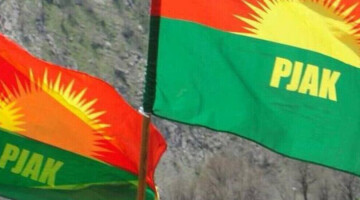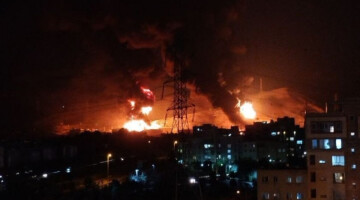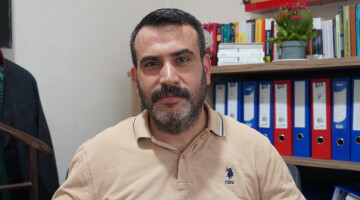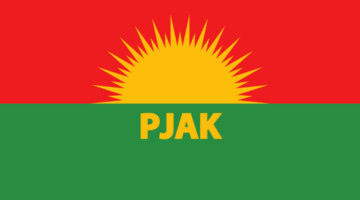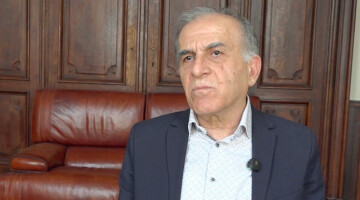In the past two years, South Kurdistan’s ruling party KDP has transformed the border with Rojava into a fortress. Under Turkey's direction, a siege situation has been created against Rojava similar to the one against the Medya Defense Zones. On the 33 kilometers of border between Rojava and South Kurdistan, 66 military bases of the KDP, which collaborates with Turkey, were created. In addition, there are hundreds of military positions. Special units of the KDP are massing armored vehicles in the region and thermal cameras are being installed. However, the bases are not used by the KDP alone, but also simultaneously by the Turkish intelligence service MIT and the Turkish army.
Before the Syrian war, the border between West Kurdistan and the KDP-controlled areas in South Kurdistan extended from Pêşxabûr (Sêmalka) in the tri-border area of Syria, Turkey and Iraq to the village of Şihêla. The area from there to the Rabia (al-Yaroubiya/Til Koçer) border crossing was controlled by the Iraqi army. There were only eight Saddam-era military posts on the border until 2012, which were then taken over by the KDP. With the beginning of the Rojava revolution in 2012, the KDP increased the number of border outposts to around 20. But that was not enough; between April and May 2014, the KDP began digging trenches between southern Kurdistan and the canton of Cizîrê in Rojava.
The Iraqi side of the border was also liberated by YPG and YPJ
With the ISIS attacks on Mosul beginning in June 2014, the Iraqi army withdrew and fled from the entire line, from the Şihêla area on the border with Dêrik to the Rabia border crossing. KDP troops and very few PUK troops were deployed in the area.
When ISIS began its onslaught on the Yazidi town of Şengal on August 3, 2014, the KDP withdrew its 12,000-strong force from this region as well in flight, leaving the Yazidis to face genocide. The area between Şengal, Til Koçer and Rabia was occupied by ISIS. Just like the Iraqi army, the peshmergas also withdrew from this line. The YPG and YPJ, in order to save the Yazidis from genocide, began to open a corridor from Til Koçer to Şengal in a fierce battle with ISIS. By the afternoon of August 3, 2014, the fighters had liberated the villages of Tawis, Kail and Mahmudiyê from ISIS, about 15 kilometers from Rabia. In Rabia, fighting with ISIS continued for a long time. Rabia and the border crossing were completely liberated on September 30, 2014, with the participation of a part of peshmerga from the PUK and KDP.
Rabia was liberated and handed over to the peshmerga
The YPG and YPJ bore the brunt of the liberation of Rabia and therefore controlled a large part of the settlement. However, they retreated across the border into Rojava and handed over the strategically important settlement to the peshmerga. In this way, an 86-kilometer-long border strip from Pêşxabûr to the Rabia crossing came under the control of the peshmerga.
KDP withdrew for the second time
Due to the distribution of territories between the PUK and KDP, the border once again passed completely to the KDP and the PUK withdrew. As part of the KDP-initiated independence referendum, the Iraqi army was mobilized in October 2017 and marched into many disputed areas, including Kirkuk. The KDP left the border strip between Dêrik and Til Koçer and retreated to the village of Mahmudiyê, 15 kilometers from Rabia.
33 kilometers of border under KDP control
From mid-October 2017 until today, the KDP has controlled an area in the Pêşxabûr Triangle near Dêrik to the village of Mahmudiyê near Til Koçer. The borderline between Rojava (Qamişlo region) and Şengal was controlled by Hashd al-Shaabi between 2017 and 2021 and then by the Iraqi police. This border line begins at Derîk and extends to Rabia and from there to near Şengal.
After talks with Turkey
After the KDP's relations with Turkey deteriorated in connection with the "independence referendum," the Barzani party attempted to compensate for the discrepancy through hostility toward the PKK, the Rojava revolution and the Kurdish freedom struggle. With regard to border policy toward Rojava, Turkey and the KDP pursued a common approach. After Nechirvan Barzani was summoned to Ankara and held talks with Turkish regime leader Erdoğan and his foreign minister Çavuşoğlu, military bases and observation posts were established along the border with Rojava. New military forts and checkpoints were established in the hills around Pêşxabûr up to the village of Mahmudiyê. Troops and heavy weapons were deployed to these bases. The bases were equipped with technological equipment, including thermal cameras. In particular, the bases of Xanikê and Şilikiyê were upgraded.
Stationing of MIT and KDP Intelligence Service
The MIT and the KDP intelligence service "Parastin" were stationed primarily in the bases of al-Qale and Şilikiyê on the Tigris River. They began interrogating travelers from Rojava to southern Kurdistan, especially members of the Self-Defense Forces. A runway for Turkish reconnaissance aircraft was established on Bêxêr Mountain, which faces the border with Rojava.
Complete encirclement after the Şengal agreement
On October 9, 2020, an agreement was reached between the Iraqi government and the KDP, under the direction of the Turkish state, to dissolve the self-government of Şengal and divide control of the region. The agreement was signed under the supervision of former Dutch Defense Minister and UN Special Rapporteur Jeanine Antoinette Hennis-Plasschaert and had the support of the U.S., British and German governments. As early as December, the KDP again deployed special forces to the border area and increased the size of outposts. In the past two and a half months, three new bases have been established near the village of Mahmudiyê. Together with these outposts, this means that at least 66 bases and hundreds of positions have been established along the 33-kilometer border of the KDP area with West Kurdistan. This means that the border to Rojava is de facto completely sealed off.
Economic embargo prevails
Time and again, the KDP closes the Sêmalka/Pêşxabûr border crossing and practices an embargo against Rojava. After the al-Kadhimi government in Iraq joined the KDP's and Turkey's anti-Kurdish policies, the al-Walid border crossing near Şengal was also repeatedly closed. People from Rojava who want to cross the Sêmalka border crossing into South Kurdistan have to apply months in advance and obtain permission from the KDP's intelligence agency Parastin.
Iraq builds wall
To increase pressure, the Iraqi military began building a wall along the border between Şengal and Rojava in March. The construction was prepared with the laying of barbed wire and the installation of camera towers. The aim is to build a wall 3.75 meters high and 250 kilometers long, which will isolate the Şengal region and make it dependent. Since 2019, the KDP has already tried to encircle the Medya Defense Zones with its special forces and repeatedly laid deadly ambushes against the guerrillas.
Triple encirclement serves Turkish expansionism
The triple cut-off is intended to effectively sever the link between Şengal, Rojava and the Medya Defense Zones. For this purpose, the AKP/MHP regime has enlisted the KDP and the Iraqi government.


